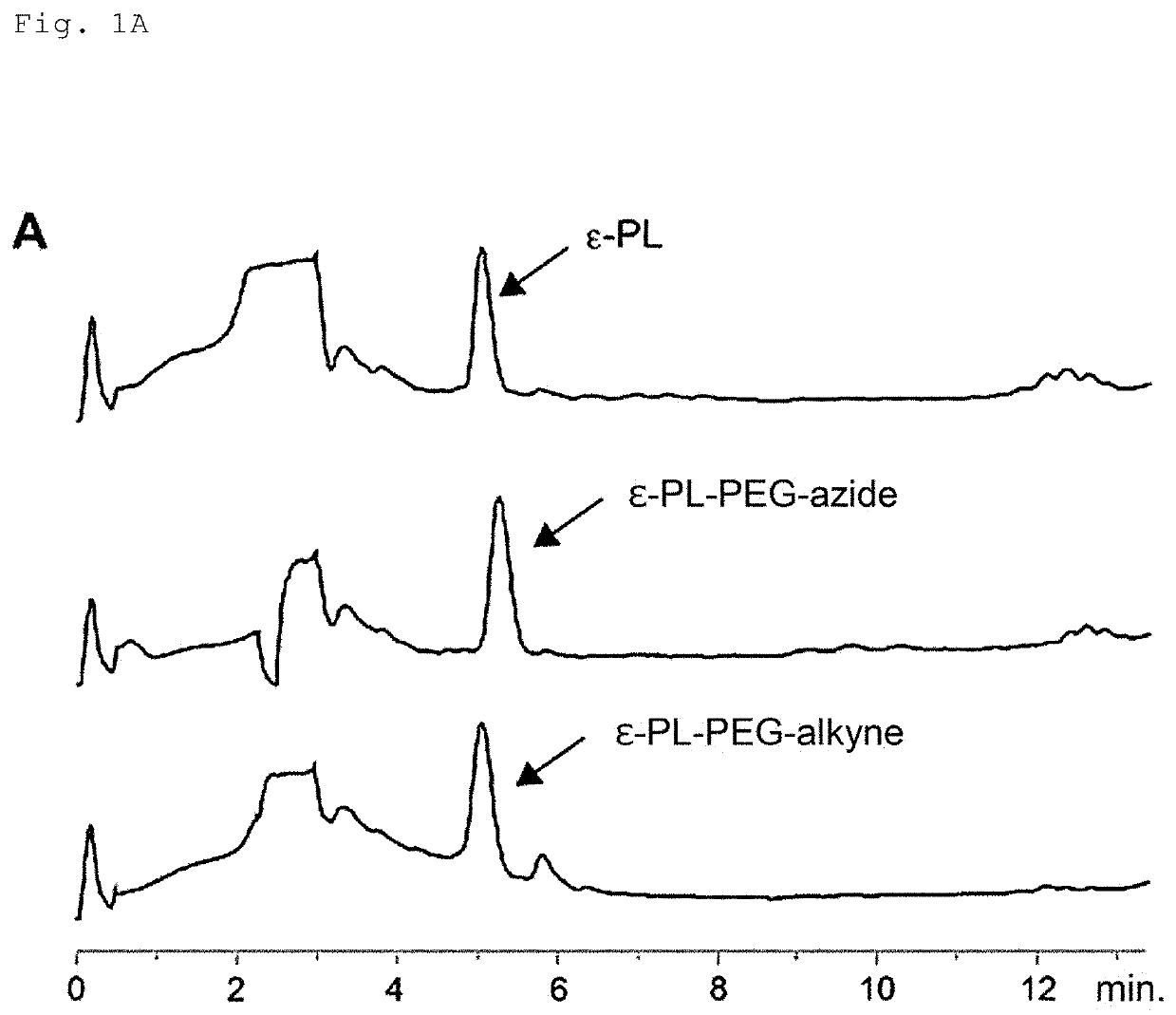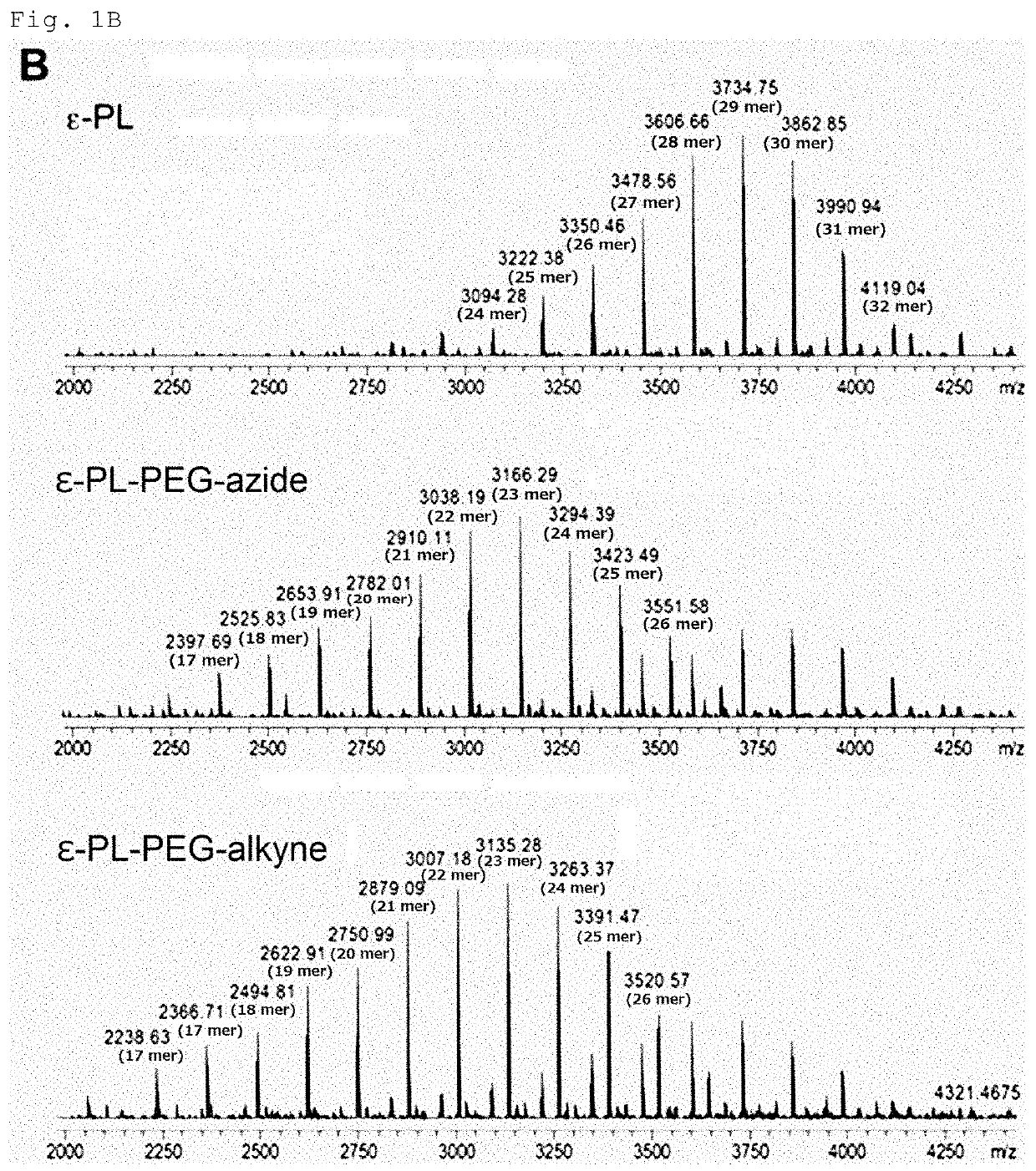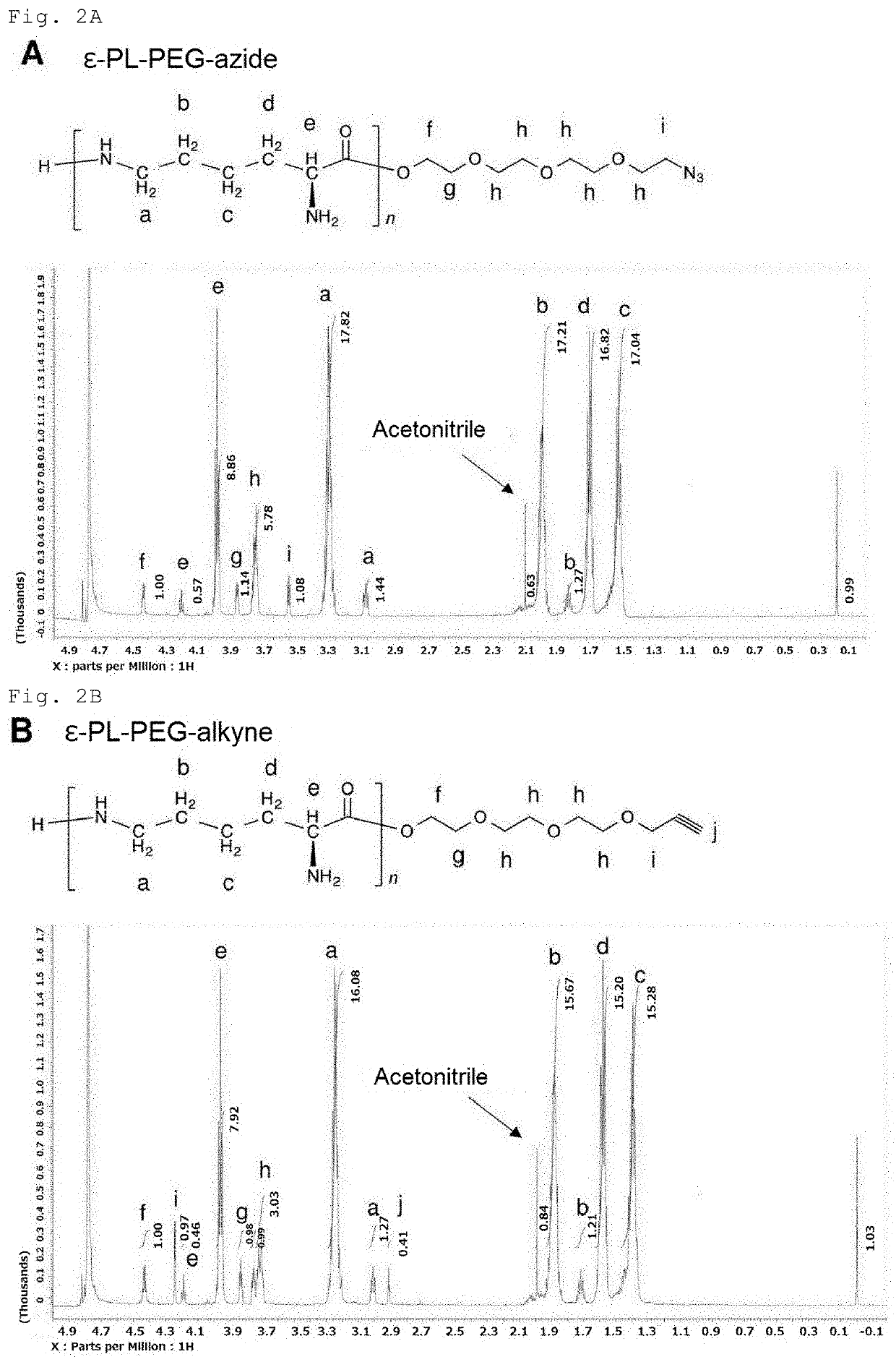E-poly-l-lysine derivatives having functional group for click chemistry, method for producing the same, and use thereof
a technology of e-poly-l-lysine and click chemistry, which is applied in the field of e-poly-l-lysine derivatives, can solve the problems of not yet established -pl modification techniques, inability to say versatile modification techniques, and inability to stabilize stability and durability of chemical modification techniques using noncovalent bonding, so as to improve the biomembrane permeability of pharmacological substances, improve the excretory function of drugs, and increase the bioactivity of drugs
- Summary
- Abstract
- Description
- Claims
- Application Information
AI Technical Summary
Benefits of technology
Problems solved by technology
Method used
Image
Examples
example 1
Method for Production of Compounds Represented by General Formula (1) by Microbes
[0155]Streptomyces albulus NBRC14147 was used as an ε-PL-producing microbe, and pls L883P / pLAE009 / S. albulus CRM003 (Non Patent Literature: Y. Hamano et al., Appl. Environ. Microbiol., 80, 4993-5000, 2014) was used as a short-chain ε-PL-producing microbe. The media used for culturing these microbes were a sterilized SLB (prepared by dissolving 10.3 g of sucrose; 10 g of tryptone; and 5 g of yeast extract in 1 L of distilled water), and a sterilized M3G medium (prepared by dissolving 50 g of glucose; 10 g of ammonium sulfate; 5 g of yeast extract; 1.36 g of potassium dihydrogen phosphate; 1.58 g of disodium hydrogen phosphate dodecahydrate; 0.04 g of zinc sulfate heptahydrate; 0.03 g of iron(II) sulfate heptahydrate; and 0.5 g of magnesium sulfate heptahydrate in 1 L of distilled water, followed by adjusting the pH to 7.0 with aqueous sodium hydroxide solution).
[0156]A spore suspension of Streptomyces al...
example 2
[0159]Improvement of Water Solubility as Well as Biomembrane Permeability of a Compound by ε-PL Modification
[0160]In order to examine whether ε-PL modification could improve the water solubility as well as biomembrane permeability of a compound, ε-PL modification of a poorly water-soluble fluorescent dye represented by formula (12) (DBCO-PEG4-5 / 6-FAM) was performed as a model experiment.
[0161]A commercial DBCO-PEG4-5 / 6-FAM represented by formula (12) (0.5 μmol) and a 9- to 18-mer ε-PL-PEG-azide represented by the general formula (10) (wherein n is an integer of 9 to 18) (1.0 μmol) were dissolved in 80% dimethylsulfoxide (hereinafter referred to as DMSO). The mixture was subjected to a click chemistry reaction while stirred at 30° C. for 24 hours. The reaction mixture was analyzed by ESI-TOF-MS / HPLC as described in Example 1. The results of the analysis confirmed that the entire amount of the DBCO-PEG4-5 / 6-FAM added was converted to ε-PL-DBCO-FAM, a compound represented by the genera...
example 3
[0164]ε-PL modification of the antifungal antibiotic AmpB represented by formula (8) was performed to further evaluate the usefulness of the ε-PL-PEG-azide which is an exemplary compound represented by the general formula (1) and is represented by the general formula (10) (wherein n is an integer of 9 to 18). AmpB, which has potent antimicrobial activity against Fungi, is an important antibiotic used in a clinical setting as a therapeutic agent for various fungal infections including deep mycosis. However, AmpB has poor water solubility (is practically insoluble in water), which causes problems such as complicated formulation preparation and adverse effects including nephrotoxicity. Various formulation technologies, such as liposomal formulation, for improving such poor water solubility have currently been studied, but have not yet produced sufficiently satisfactory outcomes. AmpB has poor intestinal absorption in oral administration, and this intestinal absorption problem has not y...
PUM
| Property | Measurement | Unit |
|---|---|---|
| pH | aaaaa | aaaaa |
| pH | aaaaa | aaaaa |
| pH | aaaaa | aaaaa |
Abstract
Description
Claims
Application Information
 Login to View More
Login to View More - R&D
- Intellectual Property
- Life Sciences
- Materials
- Tech Scout
- Unparalleled Data Quality
- Higher Quality Content
- 60% Fewer Hallucinations
Browse by: Latest US Patents, China's latest patents, Technical Efficacy Thesaurus, Application Domain, Technology Topic, Popular Technical Reports.
© 2025 PatSnap. All rights reserved.Legal|Privacy policy|Modern Slavery Act Transparency Statement|Sitemap|About US| Contact US: help@patsnap.com



